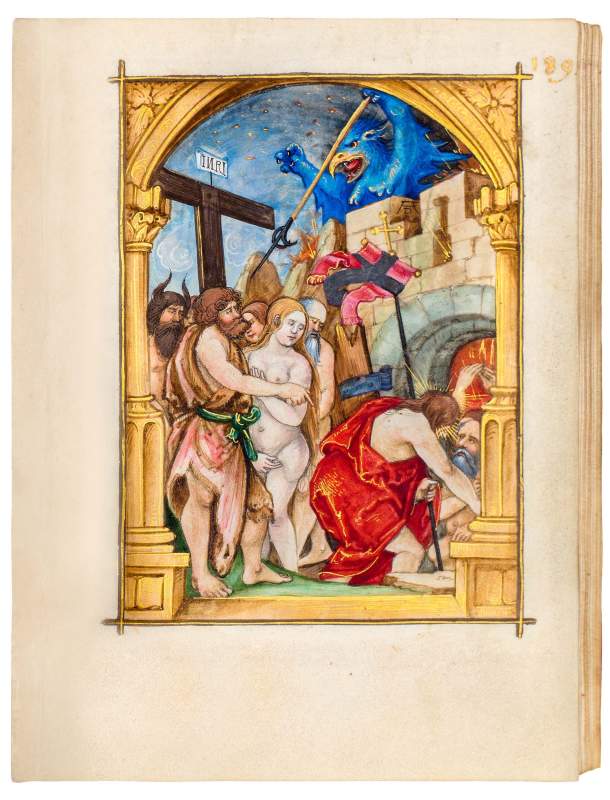Dr. Jörn Günther Rare Books is very proud to announce three notable sales to the Bayerische Staatsbibliothek München:
A richly illuminated, small-format prayer book in German by Nikolaus Glockendon for Wolfgang Hofmann, head of the Fugger trading branches in Nuremberg, and his wife Helena, with the Hofmann escutcheon and patron saints of the two owners. The manuscript was manufactured between 1513 and 1514/15 and thus, counts among Glockendon’s earlier works. The text is written in a beautiful calligraphy and is accompanied by ten full-page miniatures and thirty-one historiated initials of outstanding artistic quality. Find the digitised manuscript here.
The second manuscript is made by the same artist. It is a Passion of Christ tract composed by Heinrich von St. Gallen. The manuscript at hand was accomplished in 1521 and is particularly remarkable in its choice of iconography. Twenty-three miniatures were created separately and inserted into the book block in the manner of Flemish manuscripts. Most notably, the masterly compositions are based on Albrecht Dürer’s woodcut Small Passion series of 1511. Ten miniatures even show the famous monogram AD. This fact once lead to the hypothesis that Dürer himself was the illuminator, which clearly is not the case. But it is still intriguing because Dürer seems to have consented to Glockendon’s use of his monogram, while in 1506 he impeached the Italian engraver Marcantonio Raimondi for unauthorised use of the same (the first copyright law suit in history!). This specific circumstance indicates a mutual esteem and respect between the two great Nuremberg artists. Find the digitised manuscript here.
While the two above mentioned manuscripts come from the Renaissance era, the third of the three belongs still to the epoch of the Middle Ages. A distinguished example of the Volksbuch genre (i.e. prose novels or folk books), this manuscript is a collection of edifying and salutary fables. The German translation of the Latin original was accomplished by the Austrian cleric Ulrich von Pottenstein in the 14th century. The copy at hand was written by a scribe named Johannes Mör from Bavaria, who luckily signed and dated his work into the year in 1453. Eighty-four enchanting, coloured pen-and-ink drawings mark the beginning of each fable, including some unique compositions that are quite different from other those found in other copies of this text. Find the digitised manuscript here.



